Roofing Materials
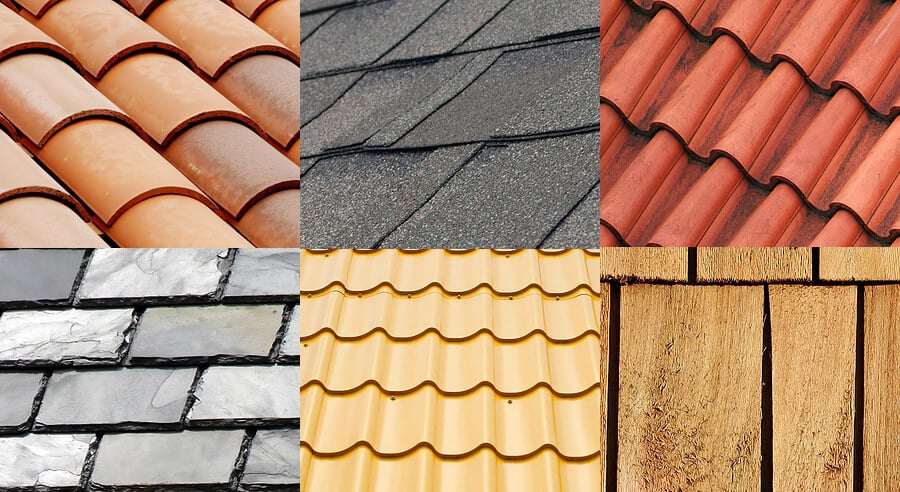
Which roof material is best for you...
Materials
Consider cost, production impacts, disposal, and maintenance. A variety of roofing products promise very long life, and, barring accidental damage, some should last virtually as long as the building. In addition to durability, other factors worth considering are the environmental impacts of production, service, and disposal; cost; whether the material can be recycled or reused; and how much maintenance it will require. In areas where cooling loads are very high, a reflective roof covering can reduce air conditioning costs substantially.
Roof color can save energy. In parts of the country where hot summers require the use of central air conditioning, a light colored roof can lower attic temperatures dramatically and reduce the load on the cooling system. In one research house designed by the Florida Solar Energy Center, attic temperatures were roughly 40 degrees cooler than those on a similar house nearby. The difference? A light colored reflective tile roof instead of darker asphalt shingles. Energy Savings up to 35% could be measured. In cooler climates you would want to do the opposite, having dark colored roofs to absorb solar heat.
Calculate energy savings: Cool Roof Calculator - Oak Ridge National Laboratory
Asphalt
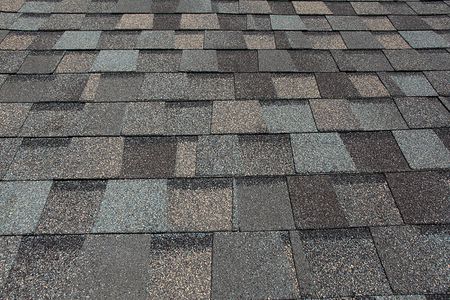
Asphalt shingles are affordable and easy to install. They account for about 60% of the residential roofing market. They do have positive attributes: Thin, three-tab shingles are among the cheapest roofing options available; they are easy to install and repair; and they don't require any maintenance. Installers are plentiful.
It's estimated that old roofing shingles account for up to 11 million tons of waste each year, much of which is not recycled. For those reasons, BuildingGreen's Residential Green Building Products recommends avoiding asphalt shingles altogether. Asphalt shingles are often replaced for aesthetic reasons before reaching the end of their useful lifespan. The most common aesthetic problem is staining caused by algae. The use of metal ridge flashing will reduce algae growth on asphalt shingle roofs.
To reduce costs, manufacturers have lowered the asphalt content and increased the percentage of filler in many types of shingles. This trend may account for the increase in complaints about algae staining. There is no consensus on whether organic-mat shingles have longer or shorter life spans than fiberglass-mat shingles. Roofing consultants agree that asphalt shingle warranties are marketing tools, not scientific estimates of the product's likely life span. Most asphalt roofing warranties are prorated over time and do not cover labor, so they are unlikely to be of any value when needed.
Light shingles are cooler, but not much. If you live in a hot climate and are considering asphalt shingles, their color may help cut cooling costs. White asphalt shingles don't have a much higher solar reflectance than darker asphalt shingles. The solar reflectance of white shingles is not much more than 30%, while other colors vary from 5% (black) to 15% (red). One company, ISP Minerals, has developed a whiter roof granule that could be used to make white asphalt shingles that have a solar reflectance as high as 50%.
Heavy shingles may last longer. Unfortunately, little research has been conducted on the question of whether shingle longevity correlates to shingle weight. Owens Corning and CertainTeed are among companies making asphalt shingles that weigh up to five pounds per square foot, more than double the weight of a shingle with a 20-year warranty. More asphalt and multiple fiberglass mat layers make these heavier shingles stronger and more wind-resistant.
Shingle recycling is becoming more common. The prospects for asphalt-shingle recycling are improving. Shingles are between 19% and 36% asphalt by weight, so the roughly 12.5 billion square feet of shingles produced every year in the U.S. represent a sizable amount of petroleum. As the price of oil rises and its availability declines, recycling should become more financially attractive.
All costs on this page will be the national average for an average 1 story walkable ranch/cape house and include labor, materials, dump fees, building permit, roofer overhead and profit.
- Cost: $5,300
- Life: 20 years
Metal
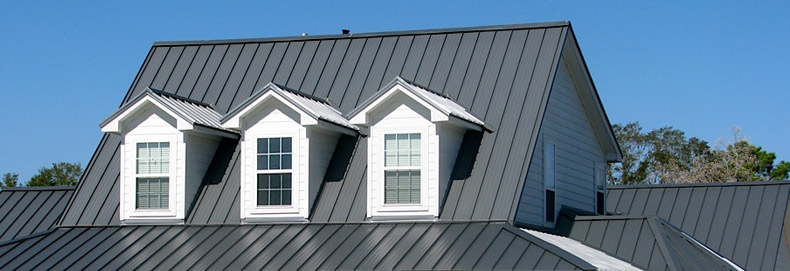
In many states, metal roofing is the greenest choice. It is durable and lends itself to recycling, and a number of companies make roofing with as much as 100% guaranteed postconsumer recycled content. Metal roofing is resistant to fire, rot, and insects — and roofing that reflects a lot of sunlight can reduce cooling costs. A light colored reflective metal roof can give you energy savings of up to 35% as well as insurance discounts up to 30%.
Solar panels generally have a lifespan of 25–30 years, the longevity of a metal roof means that they will outlive the solar panels, removing the future headache when an asphalt roof needs to be replaced sooner. They are also the recommended roof for solar installation.
Metal roofs make excellent rainwater collection systems because of their smooth, clean surfaces. Snow slides off easily, a great advantage; but snow piling up around the base of a house can block doors and windows, and even cause structural damage if walls are not securely pinned to the foundation.
Given that metal is vapor impermeable, a designer must consider whether or not a roof assembly requires venting to promote drying. The decision depends on the type of metal roofing (metal shingles and corrugated through-fastened panels allow more airflow than standing seam) and the vapor profile of the rest of the roof assembly. For example, back-venting roofing materials on structural insulated panel (SIP) roofs is either strongly recommended or required by panel manufacturers.
Galvalume standing seam are the most common type of metal roof. Galvalume is a mix of alluminum and zinc and can be used everywhere except on the coast. Aluminum, Stainless steel, Copper, or Zinc are commonly used in those locations. An alternative to standing seam panels are Exposed Fastener Panels. They are cheaper in both material and labor, but the exposed fasteners can give you a higher chance of leaks occurring that require more maintenance. The cheaper cost of exposed fastener panels are commonly used on post frame buildings for a shed or barn and are more DIY friendly.
- Cost: $12,200 (Standing Seam), $9,300 (Exposed Fastener)
- Life: 50-70 years
Roof Tiles
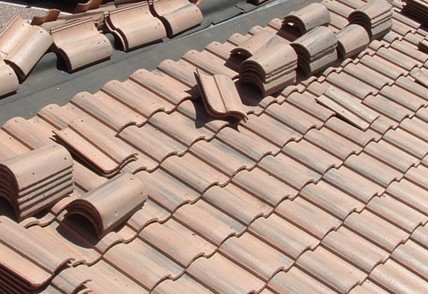
Clay roofing tiles have been almost entirely eclipsed by concrete roofing tiles, which are available for about half the cost. Concrete tiles have many of the same qualities as clay tiles, including high resistance to fire and wind. Clay or concrete tiles should be installed on roofs with a slope greater than 3:12.
- Cost: $13,500
- Life: 50-100 years
Slate
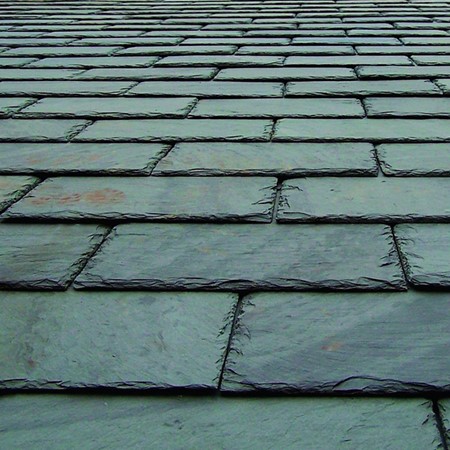
To many eyes, slate is the most beautiful roofing option. The relatively soft rock is sliced into thin sheets to form an extremely durable roof covering in a variety of natural colors. With care, it can be used over and over again. But for most builders, slate is a prohibitively expensive option. Slate doesn't undergo much processing before it's used as roofing. And a service life of 100 years is not a stretch. Slate is a relatively loose-fitting roofing material that is vapor permeable with a great drying potential, so much so that the substrate can last as long as the cladding.
- Cost: $15,000-$20,000
- Life: 75-200 years
Wood
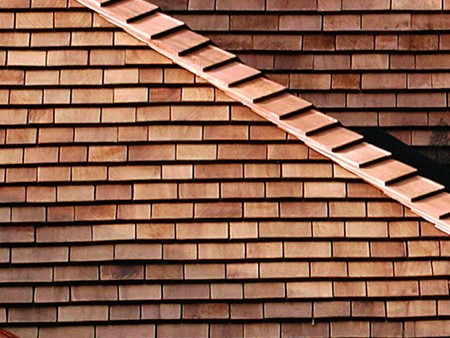
Wood roofs can last a long time. White oak roofs have lasted up to 100 years, but most cedar roofs last 25 to 30 years. All wood roofs last longer if they can dry evenly. Cedar shakes and shingles make a long-wearing roof that's lightweight and easy to repair. White oak roofs have lasted hundreds of years in Europe. Shingles can be made from many species of wood, and there are suppliers in local markets who take advantage of what grows in their areas. In addition to red cedar shingles, Eastern white cedar, Alaskan yellow cedar, and Treated pine are used.
In the U.S., wood shingle roofs are usually made from red or white cedar. Red cedar shingles make a handsome roofing material that lasts a long time when properly installed. The problem is that the best grades of red cedar — all-heart, vertical grain — typically come from old-growth forests, which by definition are not a sustainable supply source. Red cedar shingles certified by the Forest Stewardship Council (FSC) appear to be rarely if at all available.
Steep roofs are better for wood shakes and shingles. Most experts recommend a minimum slope of 6:12 for a trouble-free installation. Wood shingles should never be installed on a roof with a pitch that is shallower than 3:12. Let the shakes and shingles dry evenly, or they'll twist, cup, and crack. To let them dry, wood shingles were traditionally installed over gapped sheathing. Cedar Breather, a nylon matrix that provides an air space between the shingles and sheathing, can help make the roof last longer. Copper or zinc flashing and ridge caps can retard the growth of moss. Debris leads to decay. Leaves and other organic debris collect moisture that can rot the roof prematurely. Valleys should be swept or cleaned every so often. Depending on where they are installed, wood shingles may also need periodic cleaning to remove moss, and shingles that crack or curl should be replaced.
- Cost: $11,500
- Life: 25-30 years